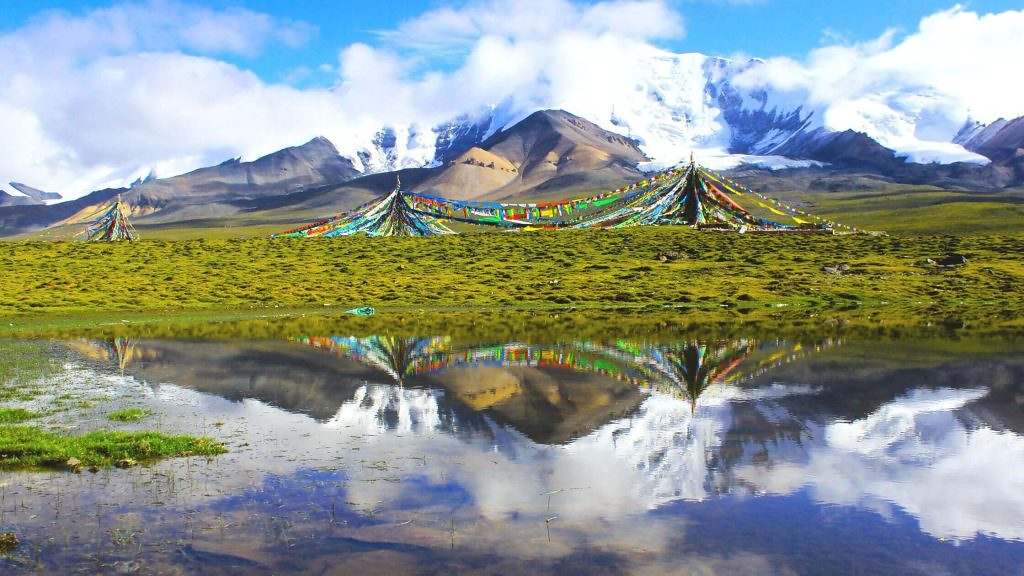The traditional starting point for the Bon and Buddhist pilgrims, who all circumambulate the range in a clockwise direction, is the Chorten Karpo near Chuwarna (Ch Xueshan) village; although most pilgrims presently set out on Tawo Zholma village, 45 kilometers due east of Tsogyenrawa. On the rough road approaching this village, the Amnye Machen range comes into sight in the distance. There are wonderful sunsets to be seen here.
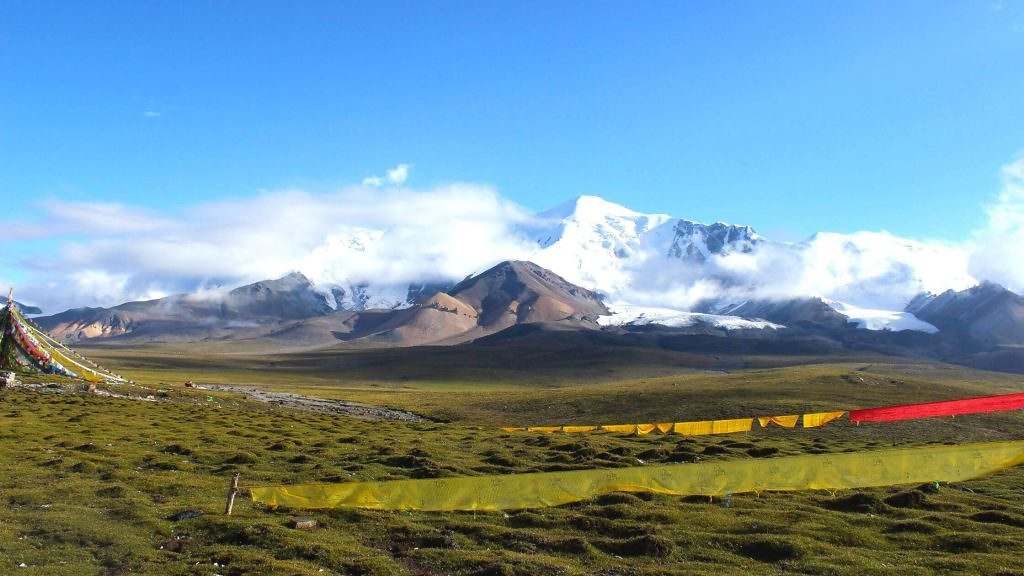
Tawo Zholma (Ch Xiao Dawu) is a religious commune with only 100 inhabitants, of whom 150 are children attending the local primary school, where there are 12 teachers. Pack animals for the circuit of the mountain can be arranged in this village.
Fording the Qushian River below the village, the trail leads five kilometers to Guri Gonpa, a branch of Dzogchen Monastery and Dodrub Chode of the Nyingma school, which until recently was the seat of the late Thubten Tsering, a charismatic lama-descended from Lhalung Peldor, who was also a contemporary of Dodrupchen Rinpoche and a qualified Dzogchen master in his own right. It was he who founded the original tented camp at the beginning of this century, and who supervised the temple’s construction from 1985 onwards. The local community in the monastery and surrounding village numbers approximately 100.
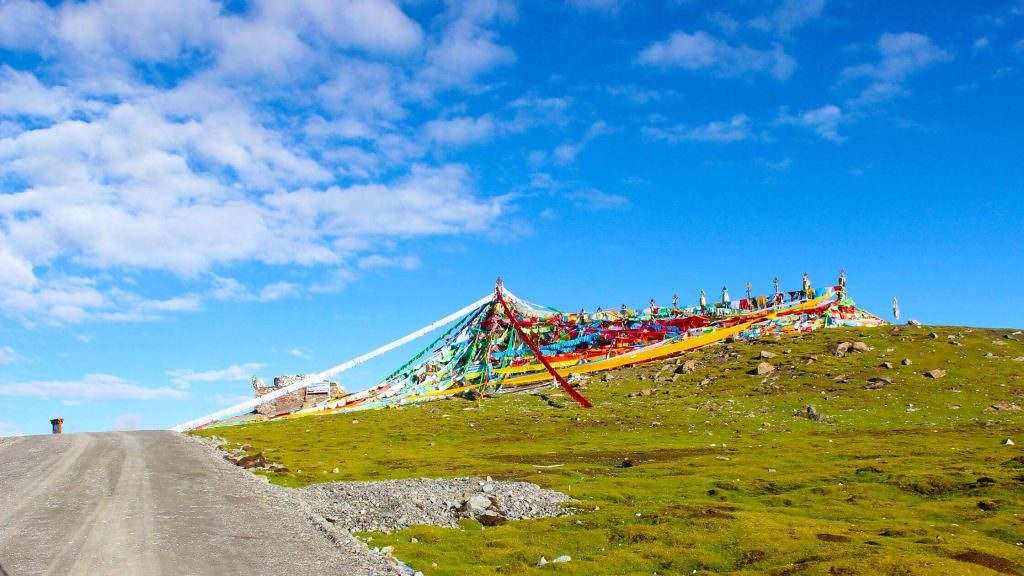
The complex comprises three main buildings and the lama’s residence. Among these, the main temple contains excellent new images of Padmasambhava, Shantaraksita, and King Trisong Detsen, as well as White Tara, Green Tara, Vairocana, Vajrasattva, Four-armed Avalokiteshvara, Eleven- faced Avalokiteshvara, Machen Pomra, and Tangtong Gyelpo. The vestibule has a large Mani Wheel Chapel in addition to the murals depicting the four guardian kings.
To the left of the temple is a Reliquary Chapel containing the consecrated remains of Lama Gyatso and Lama Thubten Tsering. It also has images of Padmasambhava and the three deities symbolizing longevity: Amitayus, White Tara, and Vijaya. The Gonkhang, situated behind the lama’s residence, contains a revered central image of Ling Gesar, the hero of Tibetan epic poetry who has many associations with Amnye Machen.
Its murals depict Tangtong Gyelpo, and Machen Pomra, complete with retinue. In the lama’s residence, there are images of Padmasambhava. Jigme Lingpa, and the ong Gyelpo. Texts are kept here which describe both the Buddhist and Bonpo pilgrimage guides to Amnye Machen.
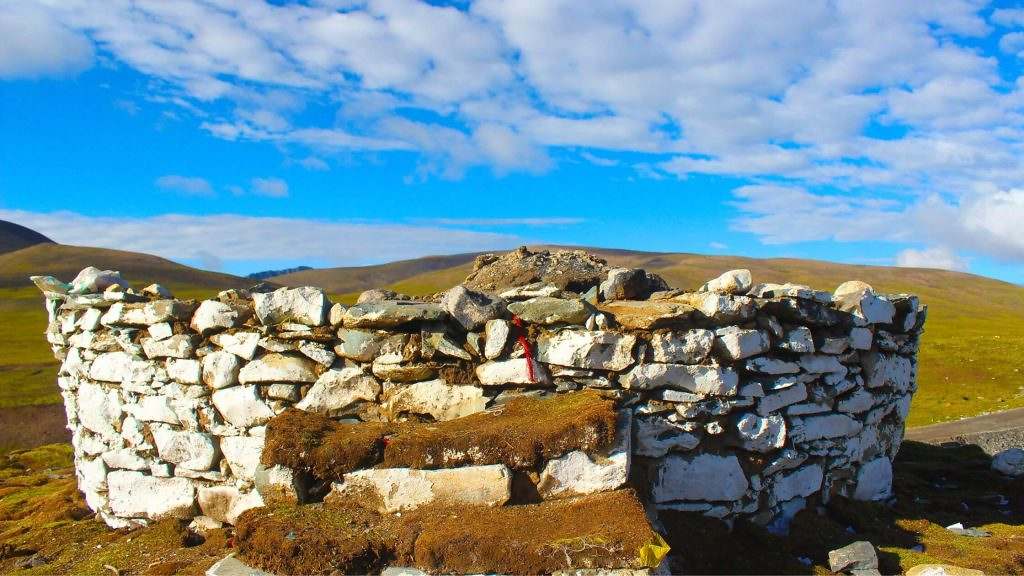
The trail climbs steadily from the monastery following the Niwagu River upstream. A large Latse bedecked with mantra-engraved stones and colorful prayer flags is passed before the low pass of Drado Wangchuk La. A trail or steeper gradient then ascends the high Drakdo Latse Chogon pass (4,328 m), close to the glaciers. The walk from the monastery to this pass takes eight hours. A ridge above the pass leads towards the glaciers and the icy Tso Karpo (white lake’), otherwise known as Drodu Nyaka (4,600 meters).
Slightly below the pass, on the south side, there is a field of swelling glaciers, known as Rigar Tongka or Rigar Tongjung. This is revered as a sacred site symbolic of the Thousand Buddhas of the present, or the Sixteen Elders. Golok camper groups are to be found in this vicinity in the summertime.
The view of the main peaks of the range is genuinely impressive from this vantage point. The highest of the 14 peaks forming the range is Dradul Lungshok (6,154 m), the northernmost peak, which lies close to the trail across the Rigar Tongjung glacier field. The next peak is the dome-shaped Mount Amnye Machen itself (6,282 meters), followed by the pyra-mid-shaped Mount Chenrezig (6,127 m), down the valley, towards Chuwarna.
Descending from the pass through the Zhideka valley, after three hours, the side valley of the Yekhok-chu joins the circuit from the north. The trail then descends through flower-carpeted grassland to the junction of the Halong-chu valley, which leads northwest towards the Amnye Machen Base Camp (4,600 m). Gazelles can frequently be seen in these parts, and there is a sky burial terrace.
Deep within the Halong-chu valley near the rocks of Phawang Serka and Phawang Hekar, there is the Terdak Phawang Drubzhi, containing the Termas of Ling Gesar, the warrior king of Tibetan epic poetry, who is said to have hidden his sword here, pledging one day to retrieve it. Even closer to the mountain are the Ser Tso (‘golden lake) and Ngon Tso(blue lake).
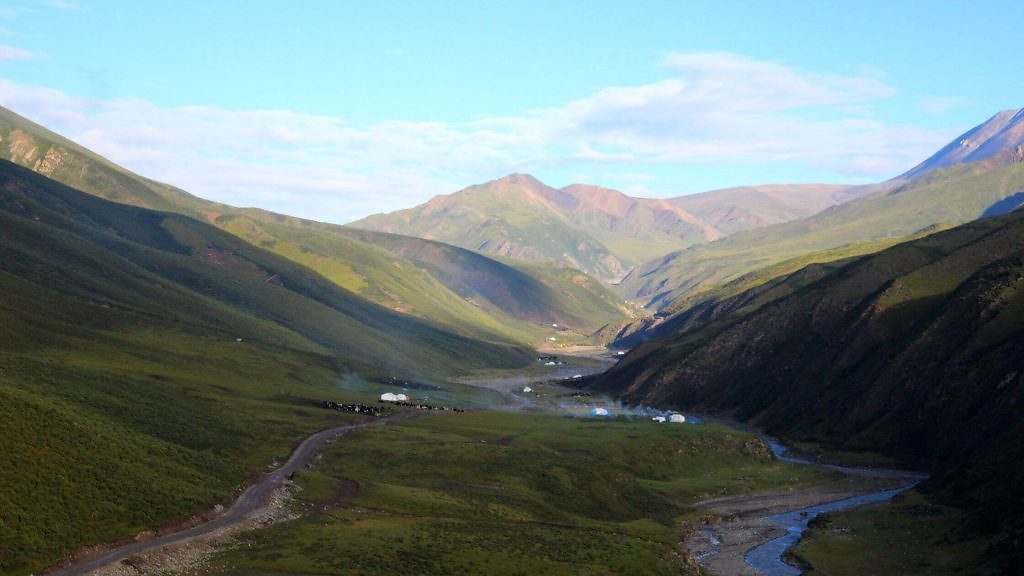
From the Halong-chu junction to the Chorten Karpo at Chuwarna (Ch Xueshan) village it is an easy six-hour trek. Here, the Yonkhok-chu (Ch Qiemugu) flows from the southwest to join the Yekhok-chu, thereby forming the Tshab-chu which flows east into the Yellow River.
At Chuwarna (Ch Xueshan) Village there are small shops and a motorable track. Adjacent to the Chorten Karpo is a large wall, known as Gonying Mani Lhartse, inscribed with the mantra of the meditational deity Vajrakila. Traditionally, this is the starting point of the circuit for many pilgrims. Follow the motor road for four hours from Chorten Karpo, passing several nomad houses set among sparse juniper woods in the hills around. At Tselnak Khamdo, the road leaves the circuit and cuts southeast for 116 m to Tawo (Machen), the capital of the Golok region. Prayer flags and stone cairns bedeck the trail and the trees along this section of road.
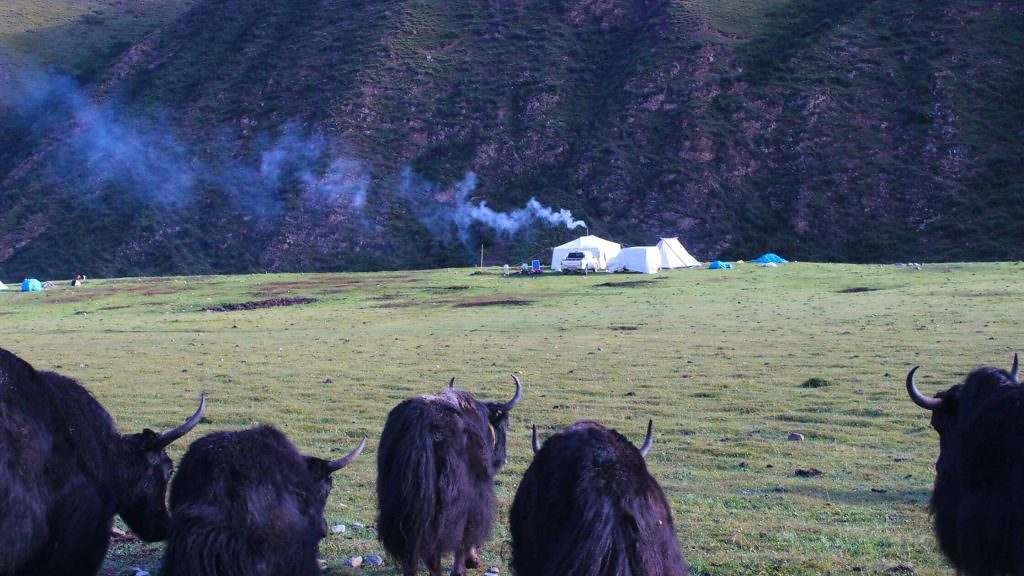
Continuing to the southwest sector of the pilgrims’ circuit, the trail passes the entrance to the Halong Langri-chu valley, which leads north toward the Base Camp. It then gradually ascends the Yonkhok-chu valley, to eventually reach the Tamchok Gongkha la pass after some seven hours. The broad saddle of the pass stretches for a further 10 km.
In summer this area is a carpet of wildflowers set against the imposing snow peaks and many nomads establish camps here. After the saddle one comes to a curious rock formation in the middle of the valley called Mowatowa, which houses several meditation caves, including that of the great Nyingmapa meditation master Shabkar Tsokdruk Rangdrol (1781-1851). The variegated cliffs of Goku Chenmo are said to mark the entrance to the ‘palace of the protector Machen Pomra.
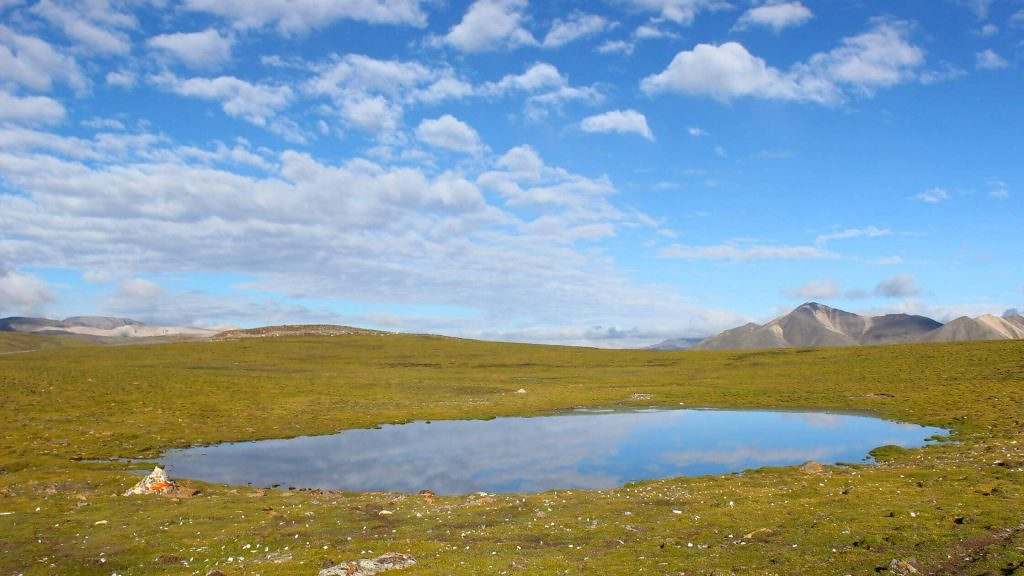
Some four hours later, the trail reaches the Dolma Gur-chu spring, which demarcates the final part of the circuit. Rather than follow the gorge of the Qushian River, the path heads over a spur, where Ling Gesar tied his horse, and then descends back down to Guri Gonpa, about five hours away.
The best months to make this circuit are May/June and September/October, avoiding the summer rains and the biting cold of winter. A tent and sleeping bag are essential as well as a good supply of food, for apart from being offered Tea, Tsampa, and yogurt by the occasional nomad, there is no chance of restocking. It is advisable to allow at least a week for the full circuit.
